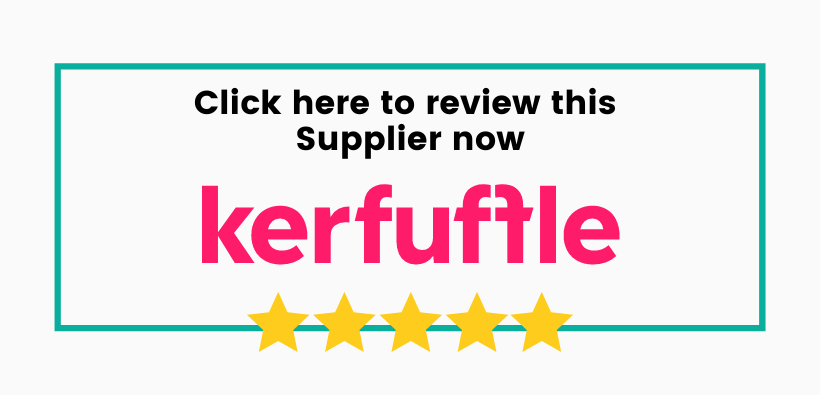An estate agent's guide to spotting title-related issues and what to do about them.
Your estate agent’s guide to spotting title-related issues and what to do about them
As an Estate Agent it’s important to be able to interpret and understand the information that a Title Deed document presents to you, and how it can impact your property transaction.
We’ve taken a closer look at the Title Deed to provide an insight into what information it serves up, and how to you can use this information effectively.
What are title deeds?
The ‘title deeds’ are commonly referred to as the Title Register and Title Plan, from HM Land Registry, which prove ownership of a property. The Title Register and Title Plan are available digitally at the click of a button with the mio Sellers Information Pack, in the mio sales management hub and provide a complete representation of ownership.
- Title Register
This is the only official document that proves a property’s ownership beyond doubt and information relating to it - precisely what is owned and the manner in which it is owned. It also sets out any covenants, easements and restrictions affecting the property and its ownership.
- Title Plan
This visually illustrates the extent of the property owned and outlines the boundaries in red. Other colours are sometimes used to identify rights of way, general boundaries and land affected by covenants.
Why is it important for estate agents to review the title deeds?
There are a number of reasons why it can be useful for you to review these documents:
1. Title deeds are one of the best ways to establish proof of property ownership, leaving you to perform identity verification and anti-money laundering checks to meet your HMRC requirements.
2. Early access to Title Deed information can help to remove those ‘I wish we’d known’ scenarios and enable you, with support from conveyancers, to resolve any potential issues related to the title before they escalate into delays or worse still, threaten the entire transaction.
3. Sharing this information at the beginning of the process with the conveyancers involved in the transaction allows them to allocate the correct team member to ensure the transaction is progressed effectively and reducing unnecessary delays.
4. By reading, understanding and including accurate details from the deeds in all of your marketing materials, you can stay compliant with Trading Standards CPR regulations for upfront material information too.
By making the seller aware of this at point of instruction can save valuable time once the sale is agreed, meaning there is less likelihood of a fall through due to a long and protracted sales process.
What’s in the Title Register and what should you to look out for?
Section A Property Register
What’s included?
- A description of the property and any rights it may benefit from (such as right of way).
Things to look out for:
- Does the information about the property and the land align with the description given by the owners?
- Review the rights the property may benefit from, and include that information on the property listing.
- Are there any potential problems to be aware of, such as boundary disputes or restrictions on use?
- The Title Tenure of the property affects the rights and responsibilities of the homeowner to occupy and use the land. While a freehold property is owned outright, leasehold properties are time restricted, typically for 99 years, before the property reverts back to the freeholder. It’s important to know that leaseholders may need to obtain permission from the freeholder before making certain alterations to their property.
- If the property is leasehold, check the length of the lease as the length of lease term is often a critical decision making factor for potential buyers. Short leases affect the value of the property and the buyer may have difficulty finding a mortgage lender who’s willing to finance the purchase. Your seller’s conveyancer can take steps to extend the lease term and make their property a more viable purchase proposition.
Section B Proprietorship Register
What’s included?
- Information relating to ownership, involving the class of title, name and address of the owner(s), purchase price, and positive covenants. It also includes notices and restrictions concerning the owner.
Things to look out for:
- The Proprietor Register information can help protect you and the buyer from an imposter seller attempting to sell the property illegally, determine the value of a property and identify any potential risks associated with it.
- The legal owner may be different from the person who actually lives in and uses the property. In some cases the property may be owned by a company. Whether a property is privately or company owned can affect how the property is taxed and how much legal protection the owner has. All owners must consent to the sale, so this is important to confirm at the outset too.
- Check that the vendors’ full names match their IDs. If they do not match, for example, a surname has changed since getting married, you should request documents such as a marriage certificate before the house is listed for sale.
- Check if there are any beneficial owners of the property; while they may not be the legal owner, they may still have a say in what happens to the property.
- Review the class of title. If it’s a Possessory or Qualified title, it’s an indication that the property may take longer to sell or that a mortgage may be harder to obtain.
- Review any restrictions as they relate to any limitations on how the owner can use the property, and be upfront with potential buyers about your findings. For example, there might be a restriction on carrying out certain types of work, or on using the property for business purposes.
Section C Charges Register
What’s included?
- Any matters that encumber the property, including leases, mortgages, rights of way, covenants, notices and restrictions relating to charges.
Things to look out for:
- Charges against a property can affect its value and the terms of any sale, so be transparent with potential buyers to reduce fall throughs later down the line.
- Review the charges and notices on the land and property.
- Look for any financial burdens on the property; if there’s a mortgage on it, you will need to know how much is owed and whether it can be transferred to the new owner.
- Check easements (the legal right to use someone else’s land for a specific purpose, such as rights of way or utilities) and covenants (a promise or agreement to do or not do something). These can impose some restrictions, for instance prohibitions on building anything taller than a certain height or making certain alterations to the property.
What does it mean if the property is unregistered?
With around 2.9 million properties marked as ‘unregistered’ with the Land Registry, it’s something you may well come into contact with as an estate agent from time to time.
Selling ‘unregistered’ property is a more complex process. That’s why It’s vital to know if the property is at least registered (or not) as soon as possible to prevent complications and delays down the line.
The most common reason for a property to be ‘unregistered’ is because it belongs to individual/s who have lived in the property from before Land Registry registration became compulsory in 1990. They can often be related to probate sales after the homeowner had passed away. They require additional administration and the original deeds will need to be found. If they cannot be traced, the seller will need to provide proof of ownership evidence spanning the last 15 years and an application made for registration with Land Registry with the help of you and their conveyancer.
Why it pays to use Veya land registry insights in mio?
When you order a Sellers Information Pack in mio, you will see a Veya Complexity Score for your property. This gives you an instant, at-a-glance indicator as to how complex the property may be to sell, which could impact timelines to exchange and completion. This complexity score is generated based on Veya’s smart analysis of the title information and reviewing where there may be potential risks or issues associated to the property based on that information.
If you have a high complexity score, rather than you having to review Land Registry documents in detail which can be a long and arduous process, you can save time by purchasing the full Veya Title Check report in mio. The report goes beyond simply highlighting Land Registry information and the Complexity Score; it analyses how those details can affect the property and recommends actions you could take along with a conveyancer to prepare the property in readiness for the conveyancing process. You can share a link to download the report as a PDF, with your seller’s solicitors so they can begin to address, early on, any potential risks or issues affecting the seller's property.
In doing so, when a buyer has been found you have avoided unnecessary delays which could result in a buyer pulling out of the sale. In many cases a conveyancer can resolve any potential issues but its far better to get these addressed at point of instruction rather than after a buyer has been secured. You can knock weeks off the conveyancing time, and demonstrate to your clients that you take proactive steps to make the selling process more secure and stress-free.
To find out more about how the mio sales management hub products and services can streamline and speed up your transactions from instruction to completion, please get in touch today.





